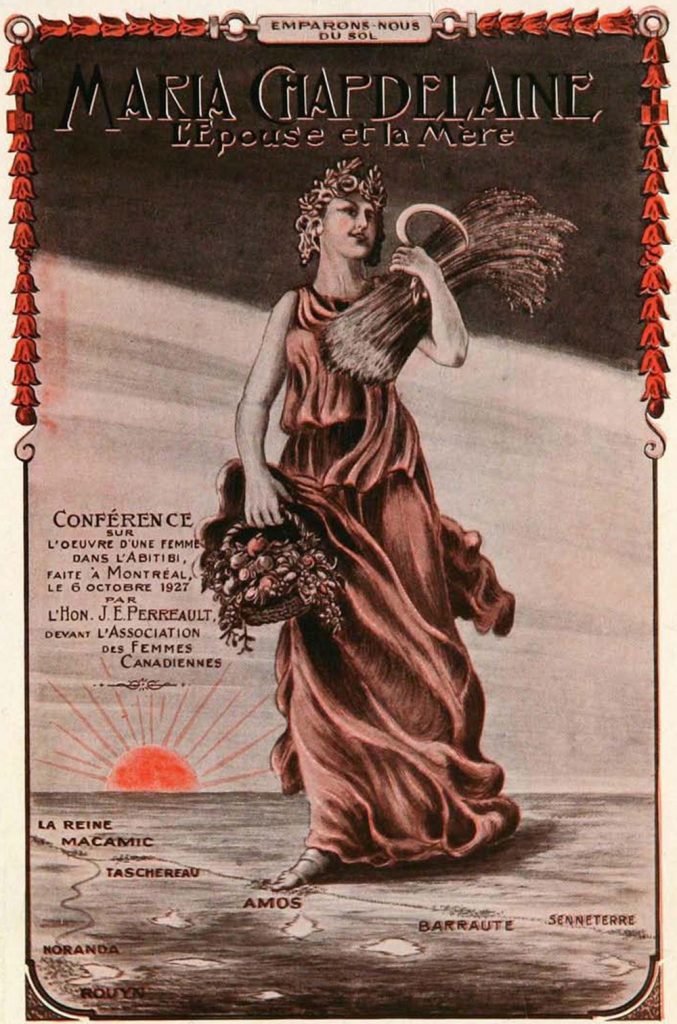Nurturing Earth: A Fertile Soil
Haying season at Blais Farm in Saint-Marc-de-Figuery, Abitibi. Photo taken in between 1930 and 1950.
Like the native communities of the past, Abitibi-Témiscamingue’s natural wealth serves as an invaluable and vital commodity for the native communities that have settled here. The territory offers rich forests and soils which is the very foundation of their livelihoods and the regional industries since the colonization.
The soils found in Abitibi-Témiscamingue are rich in wide deposits of clay left behind by the retreating glacial ice cap, over 8,000 years ago. This clay plain, infused with several areas of less rich sandy soils, represents the second largest area of cultivatable land in Quebec after that of Saint-Laurence Valley.
Praised by the already settled religious communities, the richness of témiscabitibien soils became objects of advertising propaganda on the behave of government authorities, as indicated in “Un royaume vous attend” (a paradise awaits you) published in 1950 by the Ministry of Colonization. It was as of 1870, while the rest of Quebec moved forward with industrialization and faced a massive wave of its citizens immigration towards the United States, that hundreds of colonists began to congregate in Abitibi-Témiscamingue in order to clear and cultivate the land. Many municipalities were founded between 1870 and 1950, such as Ville-Marie, Laverlochere, Barraute and Senneterre, these towns were established by the agricultural colonization.
Even if agriculture played and still does play a rather marginal role in this region’s economy which is mainly dominated by forestry and mining industries, it has left a considerable mark on its people. At the very beginning of the colonization of Abitibi-Témiscamingue, the souvenir left by the glacier’s offered to newcomers a modest income and ideal opportunities to support life within the community.





